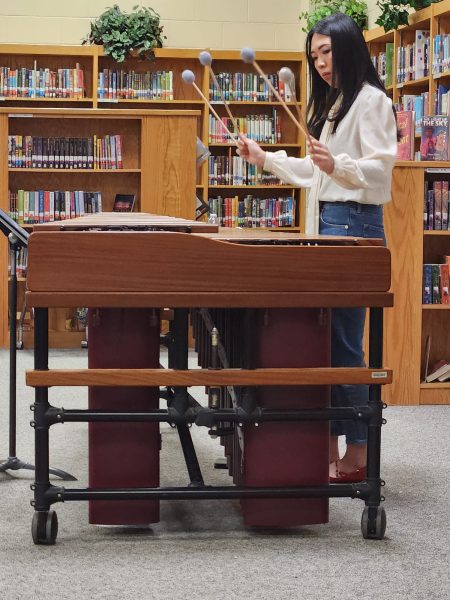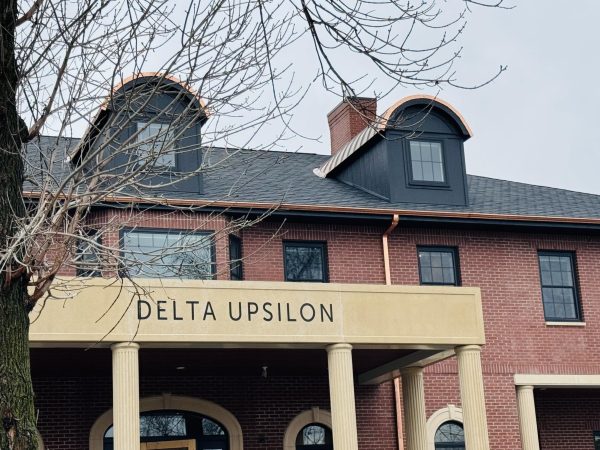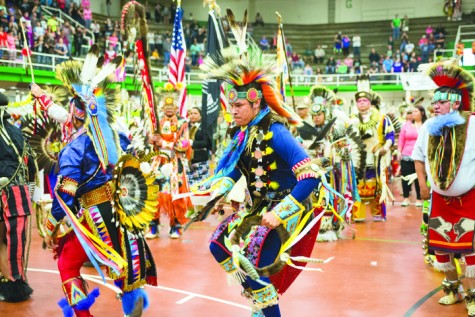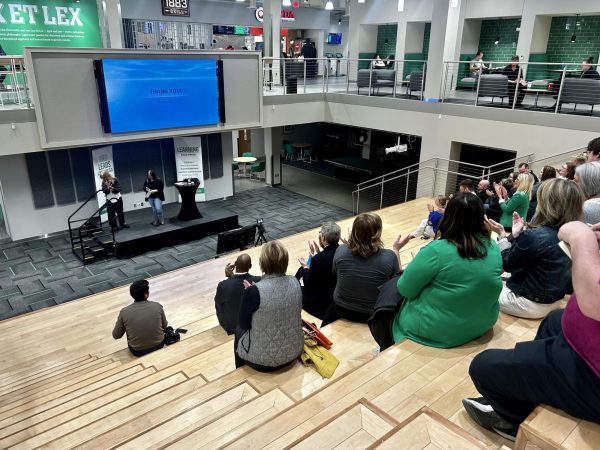Snowflake machine leads to safer roads
UND professor Mark Askelsom stands next to his snowflake machine. Photo by Nick Nelson/The Dakota Student.
Grand Forks residents are no strangers to snow, but what do we really know about it? It’s cold, it’s wet and sometimes it’s an excuse to not go to class.
However, the science behind snow is more than meets the eye, and UND professor Mark Askelson is well acquainted with it.
Askelson can trace his inspiration back to his childhood.
“I loved snowstorms as a kid. I’ve always had an interest in snow,” Askelson said. “Ever since I came to UND, I’ve had a strong interest in using advanced radar technology to identify signatures associated with snow to better understand what’s going on.”
Snowflakes form different shapes depending on temperature. On colder days, it is possible to find ice crystals, but most of the time those will clump together to form what is called an aggregate.
Warmer temperatures more commonly produce snowflakes in the shape of columns or needles. A snowflake’s shape, size and density determine how it interacts with light, and those are key factors in visibility during a snowfall.
Beyond falling snow, blowing snow is also a topic of interest, especially in this region of the country.
“We see a lot of B.S. here,” Askelson joked. “We see a lot of blowing snow. Part of that pain is self-induced.”
Askelson explains that natural grasses catch snow, but since much of the natural grass of North Dakota has been plowed over for farming, the snow has nowhere to settle.
“We’ve enhanced our blizzard capability here,” Askelson said.
To collect and examine samples, Askelson’s equipment varies from high-end polarimetric radar (to measure radar signatures in snow) to a handmade “snow box.”
The snow box was made five years ago by Askelson and a few colleagues. The inside is lined with a black fabric for snowflakes to land on, surrounded by LED lights to increase contrast.
The box is placed outside whenever a snow event comes through and is used to make quantitative estimates, as well as to closer examine the flakes themselves. An attachment at the top makes it possible to fix a camera to the box to capture close-range images of samples.
For his research, Askelson is not only focusing on the snow itself, but how snowflakes are evolving and causing changes that impact travelers.
His research has been going strongly for the past three years; however, Askelson has spent a longer period of time working with issues of weather and transportation. This is a research area that has several people at the university working on it, but Askelson credits Leon Osborne as leading the way.
In the mid-1990s, Osborne had a hand in developing #SAFE, a number that could be dialed by those planning to travel to receive road and whether conditions. #SAFE eventually became the foundation for what is today nationally recognized as 511.
Programs such as #SAFE and 511 are known as intelligent transportation systems, and are designed specifically to provide information to help travelers plan their route better and drive safer.
Askelson notes the high rate of deaths by vehicular accidents.
“One thing that has been going on for a while has been trying to improve the safety of vehicles. You’ve got airbags and overall better construction of vehicles so that if there is an accident, you have a better chance of surviving it,” Askelson said. “If I provide that traveler better information, they’re going to know they’re driving into a bad spot, and they’ll drive accordingly. They may be able to prevent the accident before it happens.”
The 511 system is in place to inform travelers. However, there is only so far in advance they are able to give weather-related notices and warnings. Askelson’s research is aimed at being able to better predict weather patterns and to give information quicker and more accurately.
“The end goal of this line of research is a positive outcome,” Askelson said. “It’s something that would help the traveling public, so that we can give them even more refined information about what kind of conditions they might interact with.”
As for the goal to become reality, that’s a ways in the future. Not only does it depend on the science behind patterns in weather, but the development of vehicular technology.
Askelson said there are two pieces: the physics piece and then the getting information into the vehicles. He explained that all sides of the community are working and it is their job to work on the science part.
“It’s a long-range goal,” Askelson said. “As far as being able to develop a better system for providing real-time information to travelers, that’s a 10-20 years kind of thing.”
Although this winter hasn’t provided many snowfalls for examination, Askelson is optimistic about his future research and looks forward to making our roads a safer place.
Serisnna Henkel is a staff writer for The Dakota Student. She can be reached at [email protected].
















